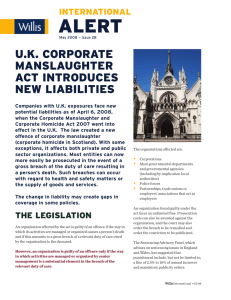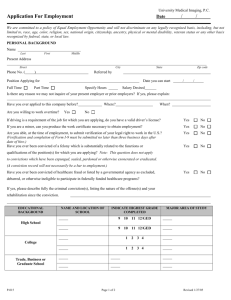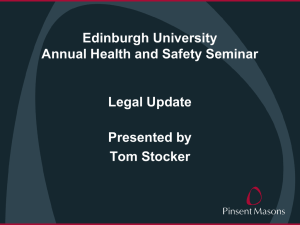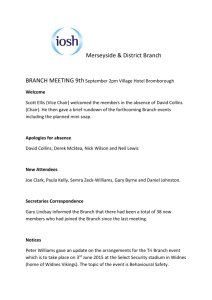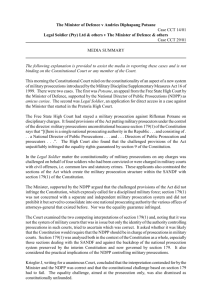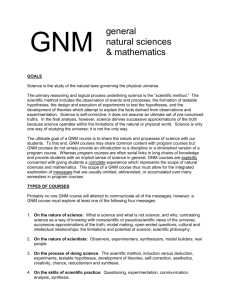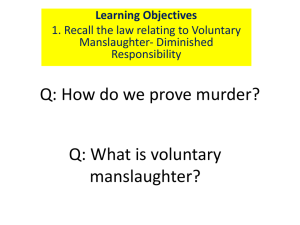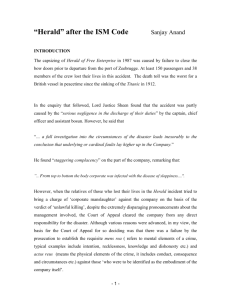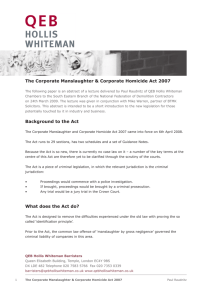(PDF) - QEB Hollis Whiteman
advertisement
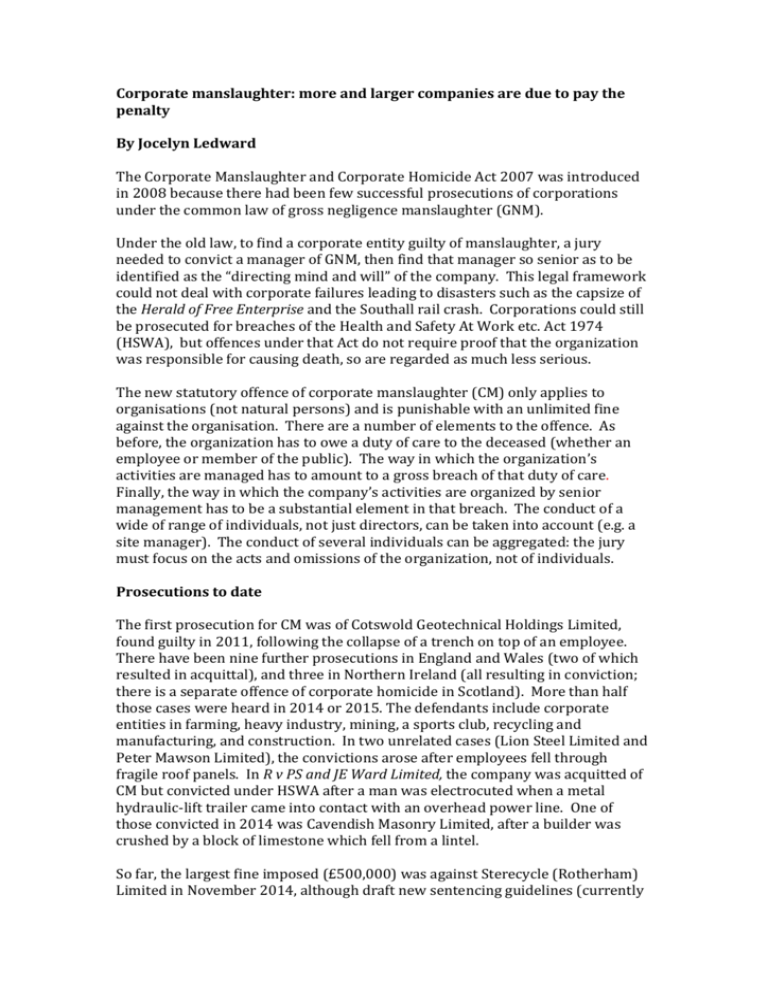
Corporate manslaughter: more and larger companies are due to pay the penalty By Jocelyn Ledward The Corporate Manslaughter and Corporate Homicide Act 2007 was introduced in 2008 because there had been few successful prosecutions of corporations under the common law of gross negligence manslaughter (GNM). Under the old law, to find a corporate entity guilty of manslaughter, a jury needed to convict a manager of GNM, then find that manager so senior as to be identified as the “directing mind and will” of the company. This legal framework could not deal with corporate failures leading to disasters such as the capsize of the Herald of Free Enterprise and the Southall rail crash. Corporations could still be prosecuted for breaches of the Health and Safety At Work etc. Act 1974 (HSWA), but offences under that Act do not require proof that the organization was responsible for causing death, so are regarded as much less serious. The new statutory offence of corporate manslaughter (CM) only applies to organisations (not natural persons) and is punishable with an unlimited fine against the organisation. There are a number of elements to the offence. As before, the organization has to owe a duty of care to the deceased (whether an employee or member of the public). The way in which the organization’s activities are managed has to amount to a gross breach of that duty of care. Finally, the way in which the company’s activities are organized by senior management has to be a substantial element in that breach. The conduct of a wide of range of individuals, not just directors, can be taken into account (e.g. a site manager). The conduct of several individuals can be aggregated: the jury must focus on the acts and omissions of the organization, not of individuals. Prosecutions to date The first prosecution for CM was of Cotswold Geotechnical Holdings Limited, found guilty in 2011, following the collapse of a trench on top of an employee. There have been nine further prosecutions in England and Wales (two of which resulted in acquittal), and three in Northern Ireland (all resulting in conviction; there is a separate offence of corporate homicide in Scotland). More than half those cases were heard in 2014 or 2015. The defendants include corporate entities in farming, heavy industry, mining, a sports club, recycling and manufacturing, and construction. In two unrelated cases (Lion Steel Limited and Peter Mawson Limited), the convictions arose after employees fell through fragile roof panels. In R v PS and JE Ward Limited, the company was acquitted of CM but convicted under HSWA after a man was electrocuted when a metal hydraulic-lift trailer came into contact with an overhead power line. One of those convicted in 2014 was Cavendish Masonry Limited, after a builder was crushed by a block of limestone which fell from a lintel. So far, the largest fine imposed (£500,000) was against Sterecycle (Rotherham) Limited in November 2014, although draft new sentencing guidelines (currently under consultation) suggest much higher fines which will have “real economic impact” will be appropriate in the future, particularly for larger organizations. Individuals In eight of the 10 English cases, individuals were charged alongside the company with offences under HSWA and with GNM (which still applies to individuals). This mirrors the old-fashioned way of seeking a CM conviction by relying on individual guilt and the identification principle. But, in fact, no individual need be convicted for the company to be liable for the offence of corporate manslaughter. And whereas the conviction rate for corporate entities is relatively high, there were no convictions of individuals for GNM alongside a CM conviction for the company (despite five such prosecutions being started), and although there were 13 individuals charged with HSWA offences, only two pleaded guilty, and one was convicted by the jury. The highest penalty imposed was a suspended sentence, although there has been one recent example of an immediate ninemonth sentence for a health and safety consultant charged with HSWA breaches following a workplace-related death. What is even more interesting is that 14 of these acquittals (4 GNM and 10 HSWA) are not the result of decisions by juries, but by prosecutors or judges to discontinue cases, after charge and often some way into the process. None of the successful prosecutions of individuals is as a result of poor performance of a truly senior management role. In Pyranha Mouldings Limited (where an employee died after the automatic closure of industrial oven doors), for example, the individual convicted was the technical director. The basis of his conviction was the unsafe and non-compliant design of the oven. In the two cases where individuals pleaded guilty, these were sole directors or proprietors of very small companies. It seems that judges are reluctant to allow cases to proceed against individuals where their conduct is part of a wider picture of collective corporate management failings. The policy and practice of the Health and Safety Executive (which is adopted by the Crown Prosecution Service in manslaughter cases) also favours the prosecution of corporate entities rather than individuals. As a matter of practicality, charges (or the prospect of charges) against individuals can also hinder the prosecution case against the company, as individuals are less likely to be willing or able to co-operate as witnesses. The future Prosecutions of individuals for causing workplace-related death are unpopular with businesses and the public when the responsibility lies with a company. Charges against individuals are likely to remain difficult for prosecutors to prove, particularly if they are based on management failures alone. There are signs that a new approach is emerging, casting off the old culture of reliance on the identification principle. In the pipeline for trial is the largest company yet to be charged with the offence, Baldwins Crane Hire Limited. There are no individuals charged alongside the company. To date, only relatively small companies have been prosecuted for CM. This is largely because directors tend to be more closely concerned with site-based activities in smaller enterprises, which makes it easier to formulate charges against them. But the Act brings a much wider category of individual under the umbrella of senior management, which should open the door for larger culpable organizations being prosecuted. We are likely to see more and larger corporate entities being held to account for CM, in a wider variety of circumstances than previously. Jocelyn Ledward is a barrister at QEB Hollis Whiteman Chambers. In 2014, Jocelyn was junior prosecution counsel in the successful prosecution of Sterecycle (Rotherham) Limited for corporate manslaughter. She advises and represents corporates and individuals in relation to business-related crime, including health and safety.
